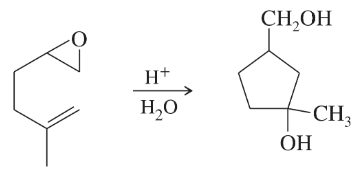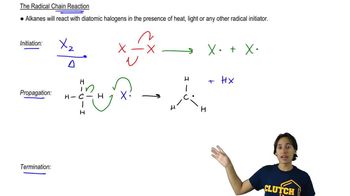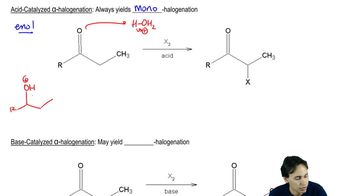Here are the essential concepts you must grasp in order to answer the question correctly.
Free-Radical Chain Reactions
Free-radical chain reactions involve a series of steps where free radicals are generated and react with stable molecules, leading to the formation of new radicals. These reactions typically include initiation, propagation, and termination phases. They are common in processes like polymerization and combustion, where the presence of heat or light can initiate the reaction.
Recommended video:
Radical Chain Reaction Mechanism.
Nucleophiles and Electrophiles
Nucleophiles are species that donate an electron pair to form a chemical bond, while electrophiles are electron-deficient species that accept an electron pair. Strong bases often act as nucleophiles, attacking electrophilic centers in molecules. Understanding the reactivity of these species is crucial for predicting the outcome of organic reactions, such as substitution and addition mechanisms.
Recommended video:
Nucleophile or Electrophile
Acid-Catalyzed Reactions
Acid-catalyzed reactions involve the use of acids to increase the rate of a reaction by protonating a reactant, making it more electrophilic. This mechanism is common in hydration reactions, where water adds to alkenes or carbonyl compounds. The presence of a strong acid facilitates the formation of carbocations, which are key intermediates in many organic transformations.
Recommended video:

 Verified step by step guidance
Verified step by step guidance Verified video answer for a similar problem:
Verified video answer for a similar problem:



 5:14m
5:14m